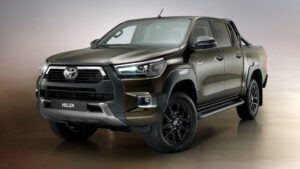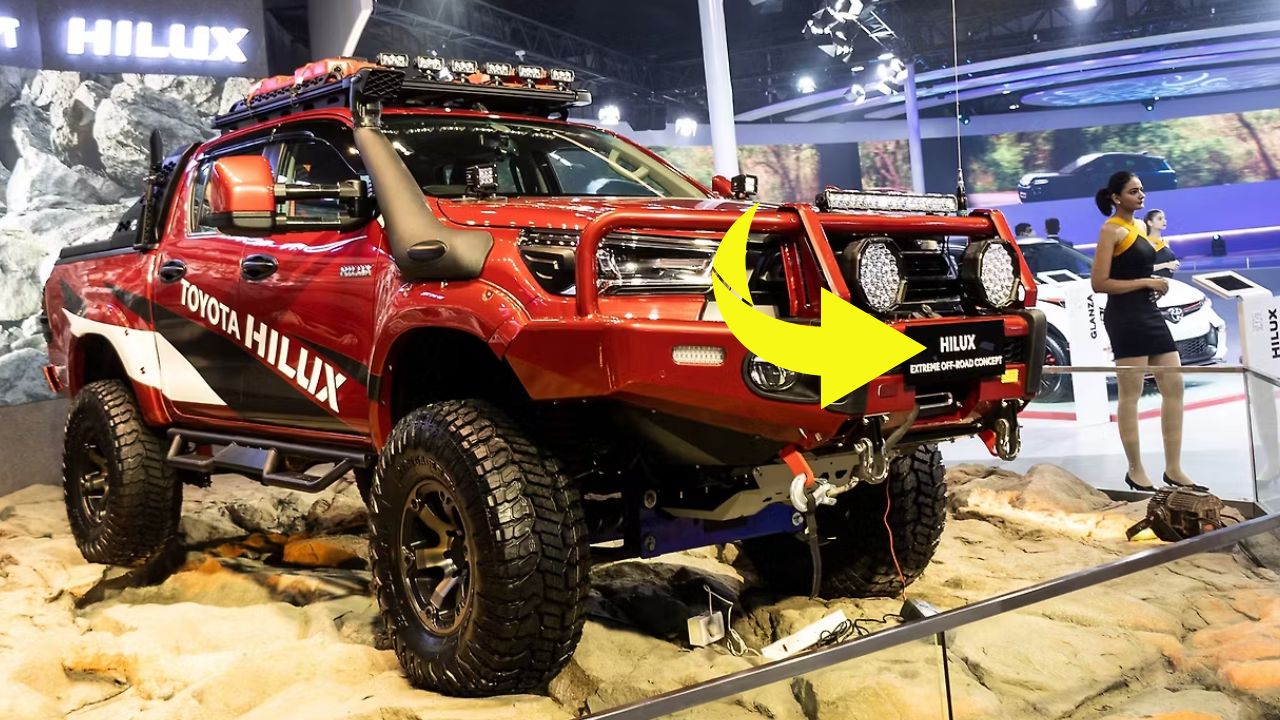The Toyota HiLux has long reigned as Australia’s quintessential ute, a symbol of rugged reliability and versatility that has dominated sales charts for decades. In May 2025, it reclaimed its title as the nation’s top-selling vehicle with 4,952 units sold, despite a 13.2% year-on-year decline. This resurgence underscores its enduring appeal among tradies, families, and adventurers who value its proven diesel powertrains and go-anywhere capability. However, the Australian ute market is undergoing a seismic shift, with electrified rivals like the Ford Ranger Plug-in Hybrid Electric Vehicle (PHEV) and the BYD Shark 6 challenging the HiLux’s diesel dominance. As stricter emissions regulations and consumer interest in greener alternatives reshape the landscape, can the HiLux’s diesel crown hold firm against these electrified contenders? This article compares the Toyota HiLux, Ford Ranger PHEV, and BYD Shark 6 in terms of performance, efficiency, capability, and market positioning to determine whether diesel remains king or if electrified utes are poised to take over.
The Toyota HiLux: Diesel’s Stalwart Champion
Performance and Powertrain
The Toyota HiLux offers a range of diesel engines, with the 2.8-liter turbo-diesel four-cylinder being the most popular in higher trims like the SR5 and GR-Sport. This engine delivers 165 kW of power and 550 Nm of torque, paired with a six-speed automatic or manual transmission. The HiLux’s diesel powertrain is renowned for its low-end torque, ideal for towing and off-road tasks, with a 0-100 km/h time of around 10 seconds in top-spec models. In 2024, Toyota introduced a 48-volt mild-hybrid system to select HiLux variants, boosting fuel efficiency by up to 10% (around 7.4 L/100 km combined) without sacrificing performance.
Capability
The HiLux sets the segment benchmark for capability, with a braked towing capacity of 3,500 kg and a payload of up to 1,000 kg, depending on the variant. Its 4×4 system, high ground clearance (279 mm), and robust suspension (double wishbone front, leaf-spring rear) make it a favorite for off-road enthusiasts and heavy-duty work. The HiLux’s tray measures approximately 1,557 mm long, 1,540 mm wide, and 480 mm deep, offering ample space for tools, equipment, or camping gear.
Features and Pricing
Priced from $27,730 for the base Workmate 4×2 to $75,310 for the GR-Sport 4×4, the HiLux appeals to a broad audience. Higher trims feature an 8-inch touchscreen, Apple CarPlay/Android Auto, and advanced safety systems like autonomous emergency braking (AEB), lane departure warning, and adaptive cruise control. The interior, while functional, leans utilitarian in lower trims, with premium materials reserved for models like the SR5. The HiLux’s resale value is a standout, retaining up to 70% of its value after three years, thanks to its reputation for durability.

Market Appeal
The HiLux’s diesel engines resonate with buyers who prioritize reliability and fuel availability in remote areas. Its global reputation, backed by decades of use in harsh environments, makes it a trusted choice. However, its aging platform—nearing a decade old—faces criticism for lacking the refinement of newer rivals.
Ford Ranger PHEV: The Electrified Contender
Performance and Powertrain
The Ford Ranger PHEV, launched in Australia in March 2025, combines a 2.3-liter turbocharged EcoBoost petrol engine with a 75 kW electric motor, delivering a combined output of 207 kW and 697 Nm of torque. Paired with a 10-speed automatic transmission, it achieves a 0-100 km/h time of approximately 7.5 seconds, outpacing the HiLux’s diesel. The 11.8 kWh battery provides an electric-only range of about 45 km (WLTP), significantly less than its rival, the BYD Shark 6. The Ranger PHEV’s full-time 4WD system and locking rear differential ensure it retains the off-road prowess of its diesel siblings.
Capability
The Ranger PHEV matches the diesel Ranger’s 3,500 kg braked towing capacity, a clear advantage over other electrified utes. Its payload is estimated at around 950 kg, slightly below the HiLux but competitive for the segment. The Ranger’s tray dimensions (1,544 mm long, 1,584 mm wide, 511 mm deep) are comparable to the HiLux, offering similar practicality. Its double wishbone front and leaf spring rear suspension maintain the Ranger’s reputation for balanced on- and off-road performance.
Features and Pricing
Starting at $71,990 for the XLT and rising to $86,990 for the Stormtrak, the Ranger PHEV is pricier than mid-spec diesel models but offers a premium feature set. Standard equipment includes a 12-inch touchscreen, wireless Apple CarPlay/Android Auto, a 360-degree camera, and advanced safety features like blind-spot monitoring and adaptive cruise control. The Ranger’s interior is a step above the HiLux, with soft-touch materials and a modern layout, particularly in Wildtrak and Stormtrak trims. Vehicle-to-load (V2L) capability allows the Ranger PHEV to power external devices, a feature shared with the BYD Shark 6.
Market Appeal
The Ranger PHEV targets buyers transitioning to electrified vehicles without sacrificing the capability of a traditional ute. Its strong towing capacity and familiar Ranger platform make it appealing to fleet operators and lifestyle users. However, its limited electric range and lack of DC fast charging (relying on 7 kW AC charging) may deter buyers seeking a more EV-like experience.
BYD Shark 6: The Plug-In Hybrid Disruptor
Performance and Powertrain
The BYD Shark 6, Australia’s first plug-in hybrid ute, launched in October 2024 with a starting price of $57,900 before on-road costs. It combines a 1.5-liter turbo-petrol engine with two electric motors (one per axle), producing a segment-leading 321 kW and 650 Nm of torque. This powertrain delivers a 0-100 km/h sprint in just 5.7 seconds, outpacing even the Ford Ranger Raptor’s 6.1 seconds. The Shark 6’s 29.58 kWh battery offers an electric-only range of 80-100 km (WLTP), with a total hybrid range of around 800 km, supported by a 60-liter fuel tank. Fuel consumption is rated at 7.9 L/100 km in hybrid mode, competitive with diesel utes.
Capability
The Shark 6 lags in towing and payload, with a braked towing capacity of 2,500 kg and a payload of 790 kg, falling short of the HiLux and Ranger’s 3,500 kg and 1,000 kg benchmarks. Its tray (1,520 mm long, 1,500 mm wide, 517 mm deep) is slightly smaller but still accommodates a standard pallet. The Shark 6’s double wishbone suspension at both ends—a rarity in the segment—enhances on-road comfort but may limit off-road articulation compared to leaf-spring setups. Ground clearance is 200 mm, and wading depth is 700 mm, respectable but below the HiLux’s 279 mm clearance.
Features and Pricing
Priced to undercut mid-spec HiLux SR5 ($60,670) and Ranger XLS ($57,630), the Shark 6 offers premium features like a 15.6-inch rotating touchscreen, 10.25-inch digital cluster, head-up display, and heated/vented seats. Its V2L capability, with three power outlets in the tray and one in the cabin, appeals to tradies needing on-site power. Safety features include a surround-view camera, driver fatigue monitoring, and adaptive cruise control. Charging is supported at 7 kW AC (30-80% in two hours) or 55 kW DC (25 minutes), giving it an edge over the Ranger PHEV.
Market Appeal
The Shark 6’s aggressive pricing, high power output, and electric range make it a compelling alternative for urban buyers and fleets aiming to reduce emissions. Its 5,000+ pre-orders by January 2025 reflect strong interest, though port delays have slowed deliveries. However, its lower towing and payload capacities may limit its appeal for heavy-duty users, and BYD’s newcomer status could raise concerns about long-term reliability compared to Toyota’s proven track record.
Comparing the Contenders
Performance
The BYD Shark 6 leads in raw power, with 321 kW and 650 Nm, followed by the Ranger PHEV (207 kW, 697 Nm) and the HiLux (165 kW, 550 Nm). The Shark’s 5.7-second 0-100 km/h time makes it the quickest, appealing to buyers seeking performance. The Ranger PHEV offers a balanced middle ground, while the HiLux prioritizes low-end torque for work tasks.
Efficiency and Range
The Shark 6’s 80-100 km electric range and 800 km total range outshine the Ranger PHEV’s 45 km electric range, though both claim fuel efficiency around 2.0 L/100 km when the battery is charged. The HiLux’s diesel, at 7.4 L/100 km with mild-hybrid assistance, is less efficient in urban settings but benefits from widespread diesel availability in remote areas. For long-distance travel, the HiLux and Shark 6 are closely matched, while the Ranger PHEV’s smaller battery limits its electric advantage.
Capability
The HiLux and Ranger PHEV dominate in towing (3,500 kg) and payload (up to 1,000 kg), making them better suited for heavy-duty tasks. The Shark 6’s 2,500 kg towing and 790 kg payload are adequate for lighter loads but fall short for tradies needing maximum capacity. Off-road, the HiLux’s higher ground clearance and proven 4×4 system give it an edge, though the Ranger PHEV’s locking differential and the Shark 6’s traction control ensure competent performance.
Value and Features
The Shark 6 offers the best value at $57,900, undercutting the HiLux SR5 ($60,670) and Ranger PHEV XLT ($71,990) while delivering premium features. The Ranger PHEV’s higher price reflects its brand reputation and towing prowess, while the HiLux’s broad price range ($27,730-$75,310) caters to diverse budgets. The HiLux’s resale value and reliability edge out the newcomers, but the Shark 6’s tech and the Ranger’s refinement challenge its interior appeal.
Market Dynamics and Future Outlook
Australia’s ute market is fiercely competitive, with the Ford Ranger leading sales in 2024 (62,593 units) and the HiLux close behind (53,499 units). The BYD Shark 6’s 5,000+ pre-orders signal a shift toward electrified options, driven by Australia’s New Vehicle Efficiency Standard (NVES) and rising fuel costs. The Ranger PHEV’s later arrival (mid-2025) gives the Shark 6 a head start, but Ford’s established dealer network and brand loyalty could close the gap. Toyota’s exploration of a HiLux BEV (currently in trials with BHP) and a potential i-Force Max hybrid (243 kW, 630 Nm) suggests it’s not resting on its diesel laurels.
Consumer preferences are evolving, with 20% of plug-in vehicle sales in 2024 being PHEVs, up fivefold in February 2025, largely due to the Shark 6. Fleet buyers, incentivized by fringe benefits tax (FBT) exemptions until April 2025, are driving demand for electrified utes. However, diesel’s dominance persists in rural areas, where charging infrastructure is limited, giving the HiLux an edge for now.
Looking Forward
The Toyota HiLux’s diesel crown remains intact, thanks to its unmatched reliability, towing capacity, and resale value. Its 3,500 kg towing, 1,000 kg payload, and proven off-road capability make it the go-to choice for tradies and rural buyers. However, the Ford Ranger PHEV and BYD Shark 6 are formidable challengers. The Ranger PHEV offers similar capability with electrified efficiency, appealing to those transitioning from diesel, while the Shark 6’s low price, high power, and 80-100 km electric range make it a game-changer for urban and fleet buyers.
As Australia’s emissions regulations tighten and charging infrastructure grows, electrified utes will likely erode diesel’s dominance. The HiLux’s upcoming hybrid and BEV variants signal Toyota’s readiness to adapt, but for now, its diesel powertrain holds the edge for heavy-duty and remote use. The Ranger PHEV and Shark 6, with their advanced tech and efficiency, are closing in, but the HiLux’s legacy and versatility ensure it remains king—for now.
